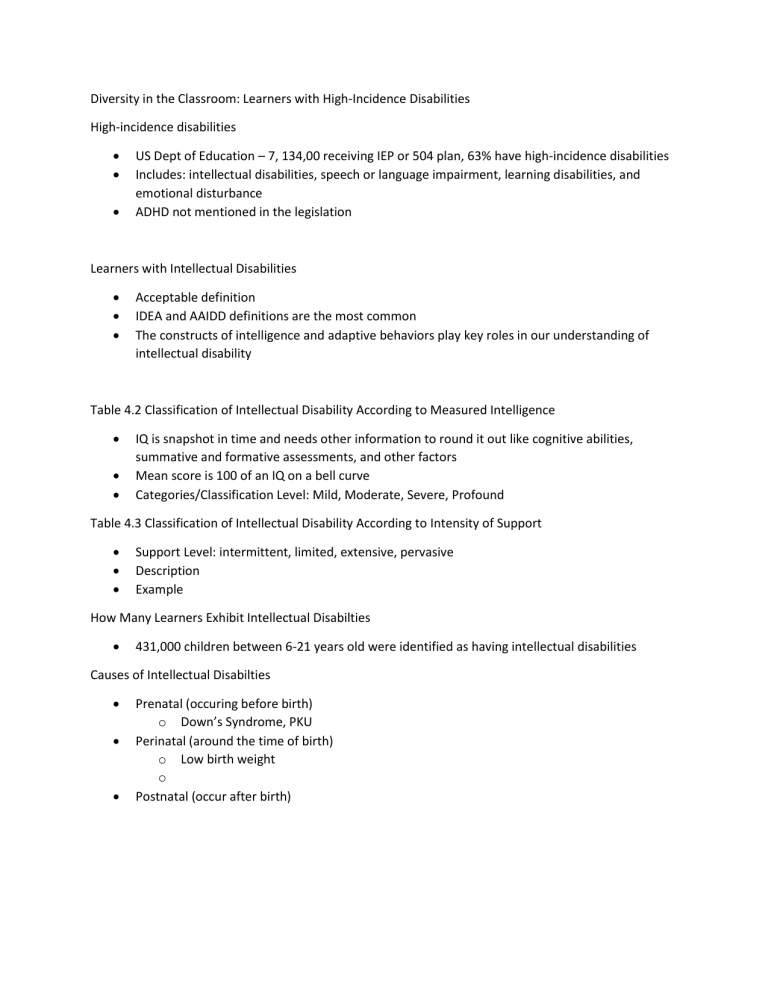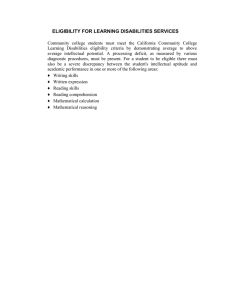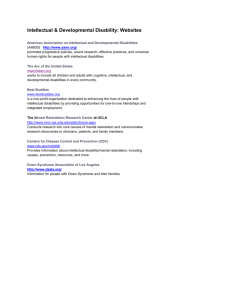High-Incidence Disabilities: Intellectual Disabilities Overview
advertisement

Diversity in the Classroom: Learners with High-Incidence Disabilities High-incidence disabilities US Dept of Education – 7, 134,00 receiving IEP or 504 plan, 63% have high-incidence disabilities Includes: intellectual disabilities, speech or language impairment, learning disabilities, and emotional disturbance ADHD not mentioned in the legislation Learners with Intellectual Disabilities Acceptable definition IDEA and AAIDD definitions are the most common The constructs of intelligence and adaptive behaviors play key roles in our understanding of intellectual disability Table 4.2 Classification of Intellectual Disability According to Measured Intelligence IQ is snapshot in time and needs other information to round it out like cognitive abilities, summative and formative assessments, and other factors Mean score is 100 of an IQ on a bell curve Categories/Classification Level: Mild, Moderate, Severe, Profound Table 4.3 Classification of Intellectual Disability According to Intensity of Support Support Level: intermittent, limited, extensive, pervasive Description Example How Many Learners Exhibit Intellectual Disabilties 431,000 children between 6-21 years old were identified as having intellectual disabilities Causes of Intellectual Disabilties Prenatal (occuring before birth) o Down’s Syndrome, PKU Perinatal (around the time of birth) o Low birth weight o Postnatal (occur after birth)



